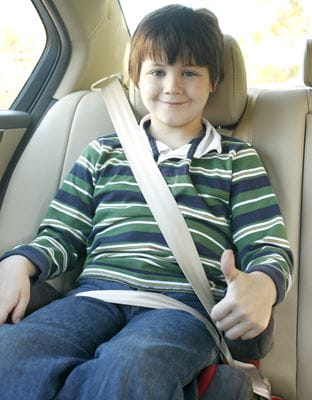Car Seat Safety – 5 Tips to Keep Children Safe
There are few things in parenting as complicated as the rules and regulations of car seats. And yet, there are few things as important for the safety and well-being of our kids.
Motor vehicle crashes are a leading cause of death for children in the United States, despite a significant decrease in child fatalities over the last decade. This year alone 5,000 children and adolescents in this country will die in a motor vehicle accident, and 90,000 more will be hospitalized for injuries received in such accidents. The proper use of car seats and safety restraints is one of the best ways to protect your child from harm.
Some Thoughts to Keep in Mind
Before we get into the specifics of car seat safety, here are a few general suggestions that will help you along the way.
Don’t rely on friends and family for information. When we have a parenting question, most of us look to friends and family to see how they’ve handled these dilemmas. While that may be helpful in some cases, this isn’t one of them. Car seat safety recommendations change frequently as new information and crash test data becomes available, and the majority of parents aren’t very knowledgeable about current recommendations. Seek an expert to help you get the best information.
Stay up-to-date. Recommendations, laws and manufacturing practices change yearly. What was current for your first child may have changed by the time you’ve had a second. Be sure you are following current recommendations to ensure the safety of your child. Register your car seat to receive safety updates from the manufacturer.
If you don’t know, ask. Don’t assume anything – car seat safety information is detailed and complex.
Be an example and buckle up. Parents and caregivers play the biggest role in child seat-belt safety. Children whose parents buckle up are more likely to buckle up themselves. Teach them the importance of wearing a seat belt by wearing it yourself.
Five Important Things to Know
1. Use rear-facing car seats as long as possible. All infants and toddlers should be placed in a rear-facing car seat in the backseat until they have reached the maximum height or weight recommended by their car seat’s manufacturer. Once a child has outgrown an infant seat (the one with a handle that assists in carrying and snaps into a base), use a convertible car seat (one that can be used rear- or forward-facing) in the rear-facing position until they’ve exceeded the height and weight limit. Each car seat will have the height and weight limits listed.
2. Children who have exceeded the weight or height limit of their rear-facing car seat should use a forward-facing car seat. Children should remain in a forward-facing car seat until they have exceeded the height or weight limits set by the car seat manufacturer. Many car seats can accommodate children up to 80 pounds.
3. Proper installation is important! Every car seat has different installation instructions. Follow the manufacturer’s directions in the instruction manual carefully. You may install the car seat using the car’s seat belts or using the LATCH system (Lower Anchors and Tethers for Children), normally not both. Tethers should always be used if possible for all forward-facing car seats whether you use the seatbelt or lower anchors to install the car seat. Newer recommendations state that if the weight of your child plus the weight of your car seat exceeds 65 pounds, the lower anchors of the LATCH system should not be used. Installing the car seat using the vehicle seatbelt should be used instead for those that exceed the weight limit. Due to COVID-19 restrictions, there are no in-person checks at this time. Please email Lina Chico, injury prevention coordinator with Orlando Health Arnold Palmer Hospital for Children, at [email protected] to schedule a virtual car seat check.
4. Once a child outgrows their forward-facing car seat, use a booster seat. Children should remain in a booster seat until the car’s lap and shoulder seatbelts are positioned correctly, typically when children have reached a height of 4 feet 9 inches and are between 8 and 12 years old. Booster seats reduce the likelihood of injuries in 4- to 8-year-old children by nearly half.
5. All children under 13 years old should be restrained in the back seat. Children 12 years old and younger should not ride in the front seat, especially if your car has air bags. The safest place for children under 13 is restrained in the back seat of the car in an age- and size-appropriate car or booster seat. Once children have outgrown booster seats, they should always be restrained with both the lap and shoulder belts for optimal protection.
Are You Interested in Learning More?
Sign up for our e-newsletter for more tips and best practices from pediatricians.
Sign Up Here










